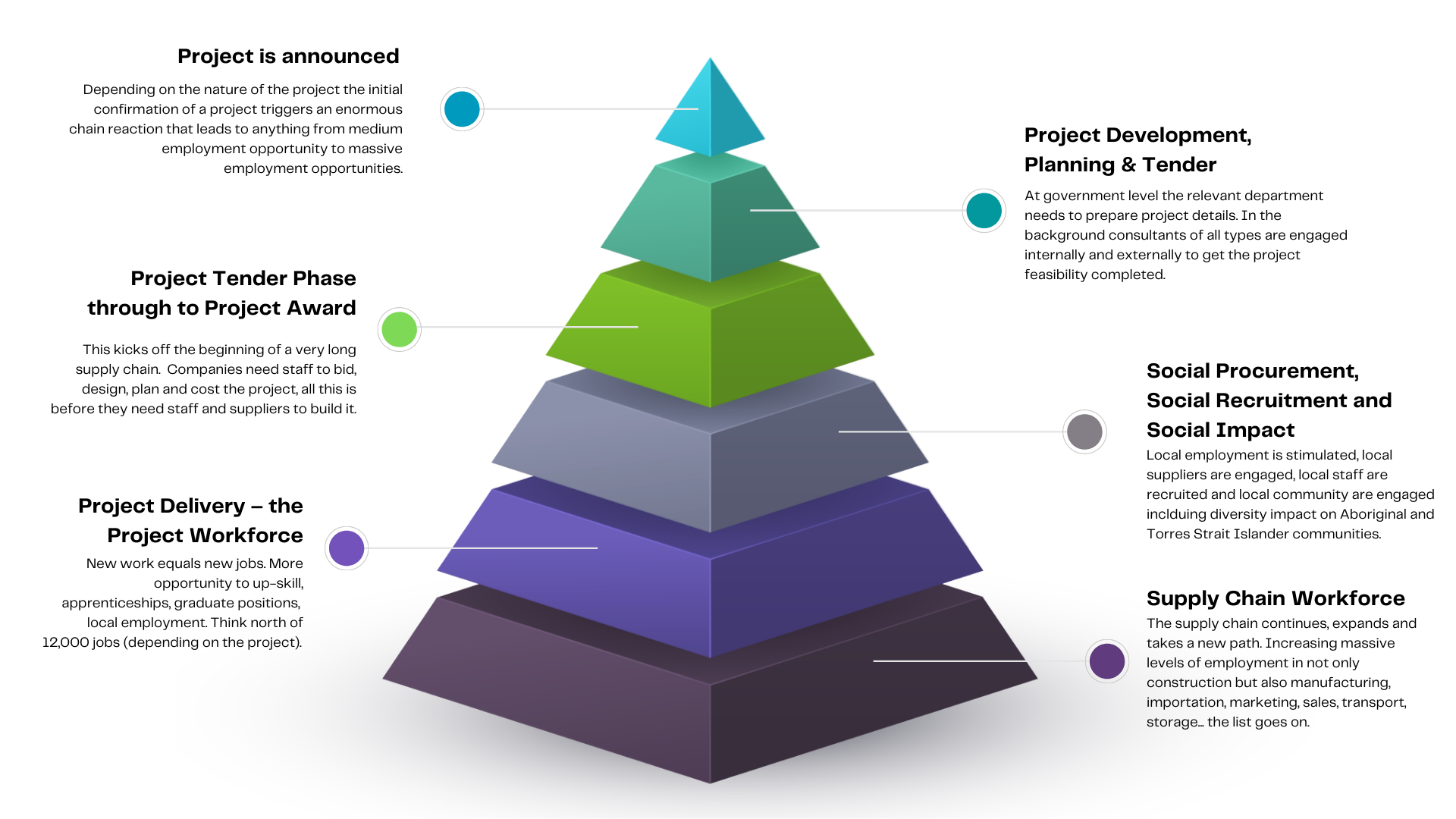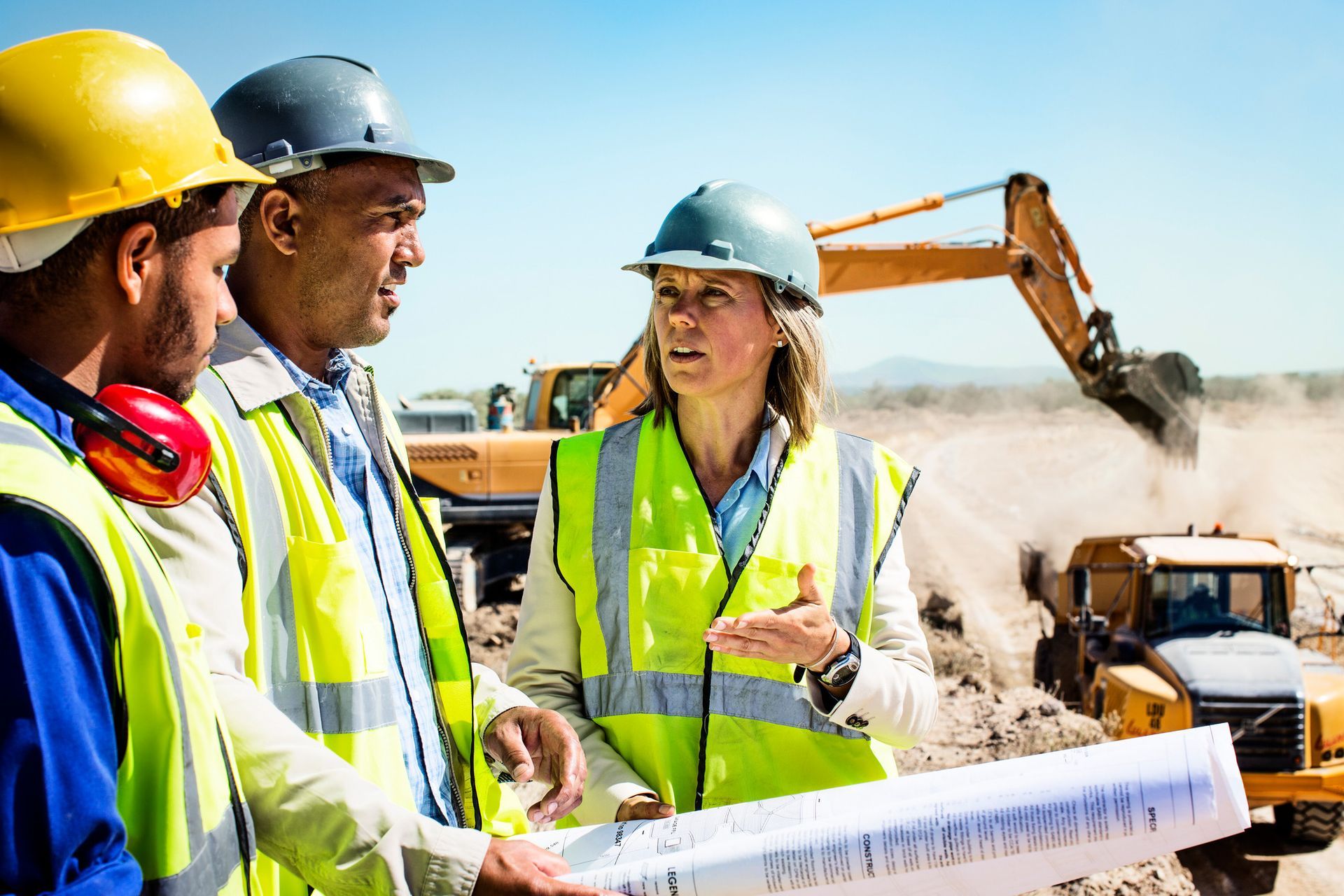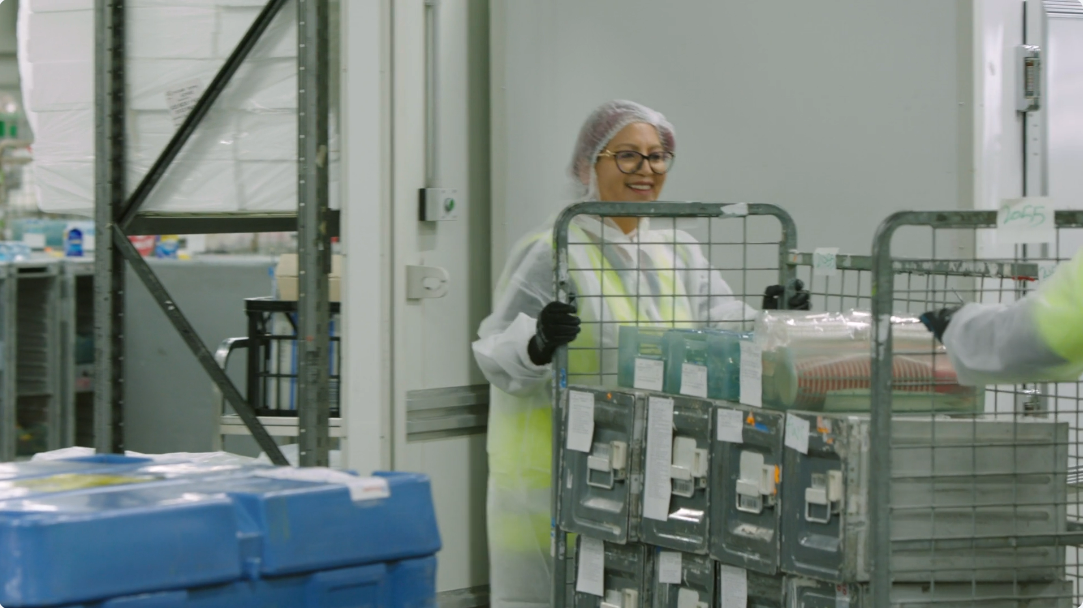This blog is an introduction to a series of posts coming in the next few weeks and months. We will be talking about the huge influence Infrastructure and Construction projects are going to have on the Australian economy, employment levels, and most importantly the stimulus it will bring to a broad range of allied industries.
Construction and Infrastructure will bring the economy back to life.
State and Federal governments are fully aware, that without a doubt, a couple of high-profile mega projects are an almost instant kick-start to employment and spending. There are so many projects that have been approved, out to tender, awarded and about to be awarded that the pressure points of how to staff them are already on the agenda.The direct stimulus on employment numbers is nothing short of spectacular, the knock-on effect throughout the supply chain will be breathtaking.
One of the best things about this industry is the hidden job market. Michael Freis, a twenty-year veteran of recruitment and staffing services calls it ‘the pyramid of employment’.

As the pyramid above shows, once a project is awarded, the industry both directly and indirectly explodes.Designers, engineers, constructors, suppliers, transport, recruiters, labour hire, warehousing, manufacturing all start to gear up to meet the needs of these projects.
For a more detailed run down of the Pyramid of Employment, you can click here.
If we use Victoria as our first example, we know the following projects are already making a great impact:
- $15B Metro Tunnel that is currently underway
- $15B North East Link Project to be awarded early 2021
- $1B Footscray Hospital
- Around $4B Southern Roads Upgrade
- $500M+ in wind and solar farms
The items listed merely scratch the surface of what is coming Nationally.
We could also mention the Inland Rail Project which is estimated to reach at least $10B, the McIntyre Wind Farm in QLD which will be a $1B project and the Metronet in WA, Cross River Rail, Sydney Metro $12B, the list literally goes on and on
The majority of these large projects are government funded which gives us a focus on social procurement, helping locals into work on local projects, local suppliers, local manufacturing and, helping remove the roadblocks to full time employment.
One the great benefits of construction and infrastructure coupled with social procurement targets set by governments is that this industry provides a platform to employ from a very broad range of people.Few industries can employ from the range of societal groups that construction and infrastructure industry does, creating possibilities for anyone entering the industry, including:
- People of any gender
- People of any legal working age
- Skilled or unskilled people
- Transitional staff (moving from automotive to construction for example)
- Minority groups
- The long term unemployed (into unskilled work with the potential to upskill)
In addition to being easily accessible for people to be employed, once in the industry, it is a flexible and engaging industry to be part of. There is a large range of work, great pay, prospective skill development, government funded training programs (as well as on the job training opportunities), convenient locations, and finally, an offering of challenging and dynamic workplaces.
As you can see, Infrastructure and Construction is building much more than a road or hospital.
Keep an eye out for more to come on this topic, and in the meantime, if you have any queries, reach out to Michael Freis, National Manager – Infrastructure & Construction at michael.freis@chandlermacleod.com or on 0438 579 476.













